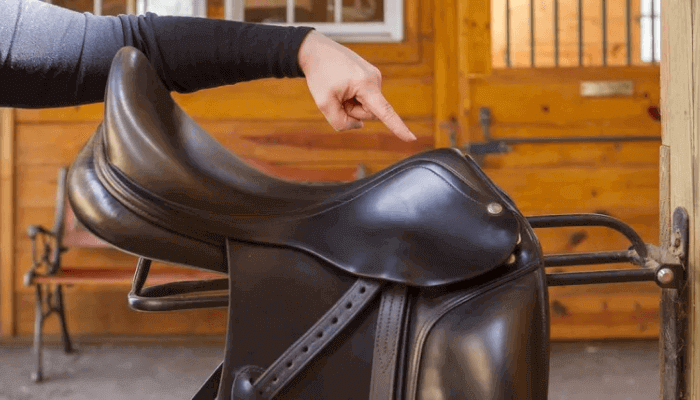- Urazia Khan
- November 16, 2022
What Are Horse Saddles Made Of? Important Things to Know

Although people have been riding horses for 6000 years, the addition of a seat made the ride much more comfortable. This realization didn’t occur until about 800 BC—the saddle was so created.
Around 100 AD, nomadic Mongolians are said to have devised the stirrup as we know it today. Stirrups gave the rider greater stability and made it possible for them to stand taller, both of which were essential for horseback combat, which mostly used bows and arrows. The best saddles are pricey and built specifically for the horse, although off-the-shelf models are available in a range of sizes and can be altered to fit.
What Are Horse Saddles Made of?
So, the question is what are horse saddles made of? Here’s what you need to know:
Material for English saddles
Because pigskin is so durable, English saddles frequently employ it for the seat and the majority of the remainder of the saddle’s construction is made of cowhide in variously finished forms.
However, there are many modern modifications to that. There are also saddles and stirrup leathers made from buffalo hide. Although it can stretch a lot, it is extremely durable. English saddle girths are typically made of cowhide, but they can be made of different leathers and materials.
Material for Western saddles
All the visible outside components of a traditional western saddle are constructed of carved leather, with the exception of the seat, which is frequently made of roughout or suede cowhide.
Western-style saddles may be stamped and carved in such large numbers thanks to leather carving. The greatest carving leathers are made of thick, fine-grained cowhide that has been vegetable tanned without the use of a binder-based finish. It is the only type of leather that can be carved and stamped, and it retains all of those shapes and impressions throughout time.
Best Material for Synthetic Saddles
There are many different materials used to make synthetic saddles, including but not limited to:
Cordura
The fabric Cordura is incredibly strong and resistant to tears, scuffs, and abrasions. Compared to cotton duck, normal polyester, and standard nylon, Cordura is 10 times more durable than the latter two.
All that is typically needed to clean dirt, mud, perspiration, etc. out of a saddle made of Cordura is to wipe it off with a moist towel. If necessary, use a light detergent and then thoroughly rinse the area (do not use bleach). Note: Prefer the care and cleaning instructions that come with a Cordura saddle to any information you may discover here. Always read and abide by those directions. A synthetic saddle constructed of Cordura is available in a variety of vibrant hues as well as dark, natural color tones.
Horse Saddle Maintenance and Care
To maintain the quality and functional aspects of your saddle for as long as possible, you must take good care of it.
The amount of use a saddle receives determines how well it needs to be maintained. Sweat, skin lipids, and general soiling act on saddles in addition to mechanical stress. As a result, a saddle should be cleaned with a damp, but not soggy, cloth after each ride.
A deeper cleaning and care procedure should come once every week (or after five rides, whichever comes first). Saddles that are dirty and neglected not only look bad but also tend to dry out and crack (which can also become a safety issue, for example, in the event that stirrup loops begin to tear).
Particularly when saddles have become wet when riding in the rain, dry rooms with a slightly reduced ambient temperature are the best storage conditions for saddles. The humidity shouldn’t be too high in order to prevent mold infestation. It is not required to use a heater to dry the wet saddle because doing so could cause drying out and shrinkage. It is preferable to let the saddle dry gradually on its own.
Great Advice from The Experts at Gaited Horse Marketplace
We advise nourishing your saddle with saddle oil twice a year. A saddle oil will provide your saddle with a lot of nourishment. The oil can be applied on the saddle with a brush. The oil bottle can be used all at once till it is finished.

The buffalo leather saddle’s suede-like appearance will gradually turn into smooth leather after being treated with oil. This is entirely typical. When all of the oil has been absorbed by the saddle, it will stop.
Recent Posts
- Facts and Information: History, Color and Features of Rocky Mountain Horse
- Tennessee Walking Horse Vs American Saddlebred: A Side by Side Comparison
- Best Horse Breeds for Riding: Smooth & Beginner Friendly
- Is Your Horse Showing Signs of Problems in its Hind Legs?
- 11 Fun Facts About Rocky Mountain Horses

